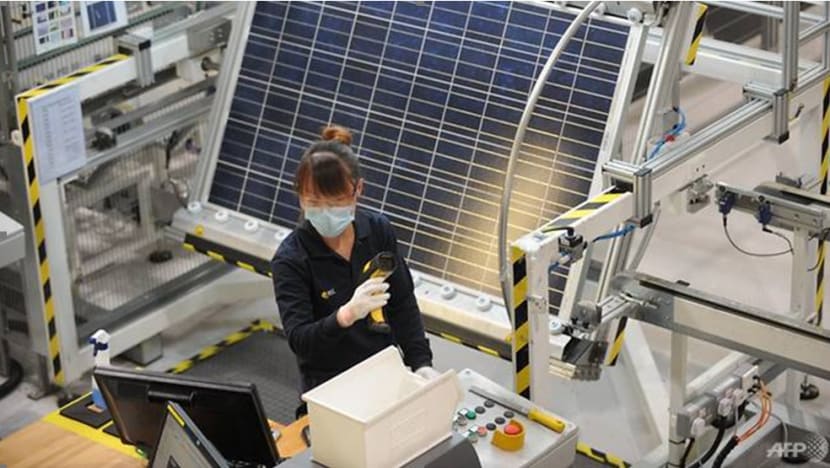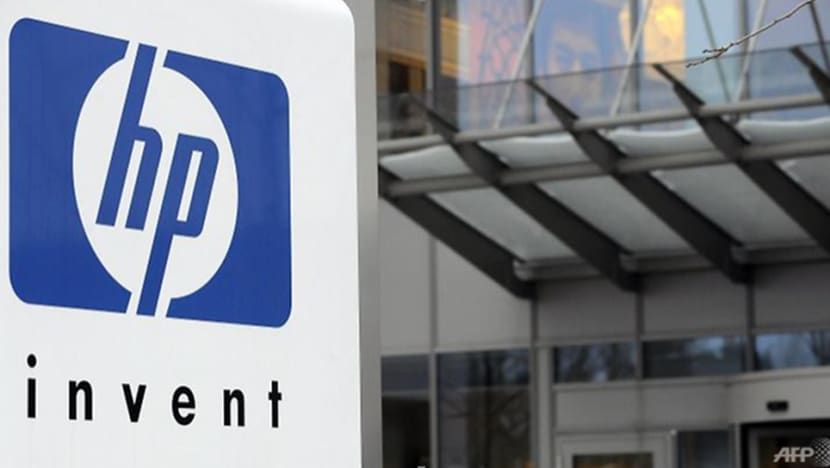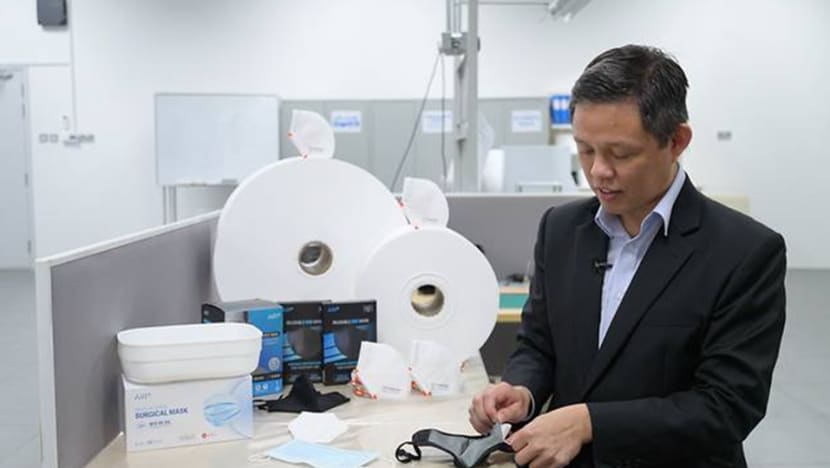Commentary: Manufacturing remains key engine of Singapore economy. It just looks different
Manufacturers in Singapore and beyond are increasingly embracing Industry 4.0 and integrating advanced technologies across their operations, say Matteo Mancini and Alpesh Patel of McKinsey & Company.

SINGAPORE: Quiet business transformations have been underway in Singapore with some manufacturers serving as lighthouses – illuminating the way forward for companies around the globe.
Tech multinational HP, for instance, illustrates how digital solutions can transform companies’ productivity, ways of working and bottom line.
HP Singapore embarked on its Industry 4.0 journey well before the pandemic to transform its factory by investing in workforce development and shifting tasks.
Their shift from labour intensive, reactive, manual work to highly digitised, automated work has freed up considerable task responsibilities, offering new space and opportunity for upskilling.
Through a combination of university partnerships, internal learning and targeted training, they have upskilled a third of their workforce and moved them up the career ladder.
Related:
Upskilled operators have been promoted to technical specialists. Technical specialists are now engineers.
By embracing more agile ways of working, HP has also unlocked new levels of growth and sustainability, while creating the skills and capabilities needed to successfully scale technologies such as collaborative robotics and 3D-printing across the business.
Their efforts have yielded impressive results, with the company reporting a 70 per cent increase in productivity and quality and a 20 per cent decrease in manufacturing costs.
SINGAPORE MANUFACTURERS EMBRACING ADVANCED TECH
HP is not alone. Other manufacturers in Singapore and beyond are increasingly embracing Industry 4.0 and integrating advanced technologies across their operations.
A select few, including HP and the Singapore-based factories of semiconductor makers Micron and Infineon, are among the 69 factories worldwide that are part of the Global Lighthouse Network (GLN).

These champions have been chosen by an independent panel of manufacturing leaders and experts of the GLN, a collaborative project of the World Economic Forum and McKinsey, after a scan of more than 1,000 leading manufacturers worldwide.
They are leaders in the adoption of Industry 4.0 technologies, and exemplify the type of production approach that can drive the next engine of global economic growth.
This is no mean feat in a year where companies have grappled with significant supply chain disruptions as travel ground to a halt and lockdowns prompted factories to shut their doors. These lighthouses adapted quickly to disruption, remaining viable and operational by leveraging the power of technology and enabling new ways of working.
The fact is that Industry 4.0 techniques help manufacturers respond much more dynamically to market changes and supply interruptions by rapidly analysing enormous quantities of data and generating actionable insights.
Related:
We now know embracing digital transformation and surviving a downturn is not an either-or conundrum.
For example, with machine learning, an advanced-equipment manufacturer needs only three days to sift through thousands of potential suppliers to identify 90 promising ones and reduce its risk of supply interruption.
While the benefits of Industry 4.0 technologies have been apparent for many years now, the pandemic brought the urgency of adopting them into sharper focus. Manufacturers who had already begun to transform their operations before the pandemic coped much better.
Yet, not all manufacturers have realised these benefits. McKinsey’s recent survey of more than 400 companies worldwide revealed three biggest barriers to implementation: Lack of prioritisation of the most impactful uses of technology, compounded by a lack funding due to the COVID-19 pandemic; limited understanding of technologies and the vendor landscape; and lack of people, skills and knowledge.
While 65 per cent surveyed said COVID-19 had made the use of such technologies even more valuable, the pandemic has widened the gulf between leaders and laggards.
NEED FOR TRIPLE TRANSFORMATION
But it is not too late to close that gap. Around the world, we have seen how companies have unlocked new levels of growth and sustainability as they employ new solutions quickly across their production networks and value chains.
Doing so requires a holistic approach – a triple transformation that encompasses business, technology and organisation.The first step is a clear articulation of the business case for an Industry 4.0 transformation, identifying the company’s most pressing business problems and being highly specific about which technologies could address them.
This order is critical. Too often, companies focus first on the latest technologies and then search internally for the problems they can solve — which often are not the most important ones for the company’s future.
Then, in developing a pragmatic implementation plan, the company will want to be judicious in upgrading its information technology and operating technology systems, so that together they better support the use of digital and analytics.
This link is what enables raw data coming from operating-equipment sensors to become insights managers can use in making strategic production decisions.
Finally, successful transformations typically place people at the centre, investing in digital capability building and implementing new ways of working that empower their teams to achieve success in a digital world.
PEOPLE COMPONENT OFTEN OVERLOOKED
Unfortunately, the people component is often overlooked or underprioritised, jeopardising the entire transformation effort. Thankfully, this is now recognised and addressed.
For example, the Singapore Business Federation has launched an Industry 4.0 Human Capital Initiative (IHCI), a two-year programme bringing companies through the implementation of Industry 4.0 solutions to improve productivity.
As the name suggests, this includes a key focus on human capital, working closely with human resources leaders to identify jobs and tasks impacted by technology adoption, conduct skills gap assessments, and design training programmes.

Sixty seven companies across 12 industry sectors have already taken part in the initiative. The results have been significant, with some achieving up to 200 per cent productivity improvements.
These companies come from a wide range of manufacturing sectors – from electronics to consumer goods – in varying stages of maturity in their Industry 4.0 journeys, which further demonstrates the value such programmes bring to companies across all stages of adoption.
One beneficiary is precision engineering company Avimac. Prior to the pandemic, the company provided machined parts mainly to the aerospace industry.
But with COVID-19 putting a halt to air travel, they needed to change tack. Avimac pivoted by increasing their product offering to the semiconductor industry.
However, compared with aerospace parts, semiconductor parts had shorter production times. Avimac realised they needed to improve processes and address inefficiencies to meet customer demand.
Through IHCI, usage-tracking devices were installed on several of their machines, revealing they were operating at just 30 percent of capacity.
Digging further, they discovered that some operators were often leaving their areas to seek advice from more experienced operators. They also found a lack of skilled operators able to perform key tasks on specific critical machines.
In response, Avimac launched workforce training programmes, which yielded improvements in productivity.

Other companies participating in the initiative have had similar experiences, unlocking significant productivity gains through the implementation of Industry 4.0 technologies.
STAKES FOR INDUSTRY 4.0 EVEN HIGHER
As we look ahead to the next normal after COVID-19, the stakes for scaling Industry 4.0 technologies are likely to become even higher. The pandemic has reinforced their value and set a higher bar for success.
For Singapore, the gauntlet has already been thrown down. With the ambition of growing the country’s manufacturing sector by 50 per cent by 2030, the Government is forging ahead with measures to develop innovative new technologies and support workforce training.
These efforts, alongside initiatives such as the Global Lighthouse Network, IHCI and others, are set to provide essential support to manufacturers seeking to accelerate their transformations.
Their success will be central to the country’s efforts to develop a competitive advantage in the years ahead.
Matteo Mancini is a senior partner at McKinsey & Company and the Asia Leader for Manufacturing and Supply Chain. Alpesh Patel is a partner and leader of McKinsey's Digital Capability Centers (DCCs) in Asia.





















